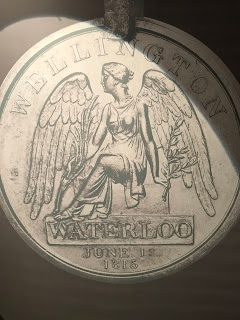In an increasingly cashless society, it is time to consider what we are in danger of losing. In the great financial crashes of the future, we’ll no longer see pictures of men carrying wheelbarrows of money into shops to buy a tomato aka the German hyperinflation of 1923. They’ll be replaced by wheelbarrows of bytes. And what visual poetry we will have lost.
The first coin minted by an English King was the Silver Penny of Alfred The Great in the C9th
.
For a long time minting coin was decentralised, the responsibility of licensed moneyers and crafted by hand. Unfortunately for them in 1125 Henry I was on the throne. Known as ‘The Lion of Justice’ in a non-PC world, he was so outraged by the bad coinage in circulation he decided to take measures. People were losing faith in his coins, some light on weight, others with large nicks taken from them by moneyers squirreling away the gold and silver for themselves. The moneyers were rounded up, had their right arm chopped off and for good measure suffered castration. This was met with approval by the church and their chroniclers. Bishop Roger of Salisbury personally rounded up the moneyers of Winchester and handed them over to their fate. When money was at stake, the medieval church knew its priorities.
These 'nicks' were hardly subtle. Looks like the mice have been at them
As a historian, a reader and a writer of fiction, I’ve always been fascinated by references to groats and testoons, and now for the first time I could see them for myself. They didn’t disappoint.
1) The Henry III Long Cross Penny 2) The Henry VII Groat.
It was Henry VII who introduced the life like profile of the monarch on a coin. In 1791, Louis XVI of France met his downfall by this. Escaping from revolutionaries he was recognised at the border by a village postmaster who recognised his face from a coin.
The Noble and the Half Noble, introduced by Edward III when he wasn't attacking France.
9) The Henry VIII Groat 10) The Henry VIII Testoon 11) Edward VI Half Sovereign. Edward's coin is unique, being the only coin with a child's face on its front. It's because he came to the throne in 1547 aged nine and died in 1553 - so frozen in time.
When Elizabeth came to the throne in 1558 the currency had been debased by Henry VIII and Edward VI by adulterating the gold and silver content with copper. She set about restoring it's purity. It's regarded as one of her finest achievements, which when set against the Armada, ruling as a woman in a man's world and avoiding all the plots to kill her, says a lot about how bad the coinage must have been. This is a the Elizabeth silver shilling, the larger one, a medal.
In 1279 the ‘Mint’ was centralised and relocated in the Tower of London, where it stayed until 1810 before moving to new purpose built premises on Tower Hill. There and using the latest steam driven machinery, coinage was revolutionised. And not just coin.
Medals had been designed and struck as early as the C17th but after the battle of Waterloo in 1815, it was decided to award a medal to every single soldier who had fought in the battle. It began a tradition that has continued for British campaigns ever since. What was incredible was the fact that they were, in a very short time scale, able to individually engrave the names of the 40,000 eligible soldiers, and that we still have the bound medal roll of the soldiers awarded.
Even Wellington had his medal
What I find striking is the immaculate copperplate handwriting of the bureaucrat/s involved.
Another striking medal is the Ashanti war medal of 1874,
A medal of Lawrence of Arabia
In fact the entire collection of war related medals is a potent and evocative reminder of Britain’s imperial past. Undue pride or indeed shame is fruitless, an intellectual dead-end. It had its moments but amounts to a blink in world history. A case in point, is the origins of the iconic Britannia. It was first coined by the Romans to celebrate their conquest of Britain. It was resurrected by Charles II in 1672 when Britain began its own slow conquest of the world.
The Gold Sovereign - a long way from Alfred's silver penny
And the coin that illustrates this best is the gold sovereign, introduced by Henry V11 to boost the image of the new Tudor dynasty. After a short eclipse by the guinea in the late C17th it was re-introduced in 1817 and in the heyday of Victorian splendour became the symbol of empire.
Paying contactless may be more useful but this is more beautiful and in itself tells a story. This is probably the first period in our history since the Norman Conquest of 1066 when all the coins in circulation feature one monarch. The Queen.
And what I would like under my bed, if I could carry it.



























